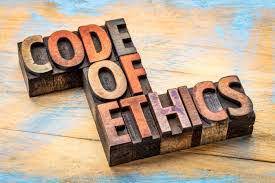ECI’s Global Business Ethics Survey: The Plusses and Minuses (Part I of II)

The Ethics and Compliance Initiative is a terrific organization that provides important ethics and compliance insights and leadership. Starting in 1994, ECI has conducted a longitudinal, cross-section study of workplace conduct. ECI recently issued its sixteenth GBES results, which provide important benchmarks on the state of ethics and compliance programs in business.
ECI focuses on the connection between an organization’s ethical culture and workplace behaviors. This connection is the critical foundation to ethics and compliance work. ECI typically connects corporate culture to levels of employees, including leaders, supervisors and co-workers. A positive corporate culture translates into commitment, modeling and the right conduct by all employees in an organization.
ECI uses four key measures that directly impact ethical outcomes – (1) pressure in the workplace to compromise ethical standards; (2) observations of misconduct; (3) reporting misconduct; and (4) retaliation experienced by employees after they reported misconduct.
To complicate matters during the 2021 GBES survey, ECI collected responses in the midst of the pandemic. In this unprecedented year of stress and organizational change, the 2021 GBES results are even more significant. Every organization in one way or another experienced disruption, significant change, adjustments and employee change.
For the most part, the 2021 GBES survey reflected the impact of the pandemic – many trends held steady, and one important measure of retaliation, increased significantly. This uptick in retaliation is a deeply disturbing trend and will be addressed in the second part of this blog post. On the other measures, it appears that organization’s generally held steady, which is quite an accomplishment during the pandemic of 2020.

Culture strength and reporting rates held steady. Pressure increased (for understandable reasons) depending on the level of employee. Some of the key findings:
- Slightly more than one in five U.S. employees (21%) were in workplaces with a strong ethical culture, mirroring ECI’s finding in 2017. Ethical culture measurement has held relatively steady for the past decade. Interestingly, top management’s perception of the organization’s culture as ethical regularly exceeds such a perception by employees.
- Continuing a positive trend over the last ten years, employees who observed misconduct in 2020 were more likely to report their observation than they were in 2017 (86% vs. 69%).
Despite these positive culture indicators, there were some troubling findings:
- Employees were more likely to feel pressure to compromise their organization’s ethics standards (e.g., to “bend the rules”) during periods of organizational change. In 2020, 30 percent of employees experienced pressure, the highest level since 2000, and more than double than 2017. Pressure on employees to cut corners and engage in wrongdoing has increased steadily over the last decade. Obviously, COVID-19 may have been a strong factor in the 2020 increase.
- In 2020, 49 percent of U.S. employees reported observing misconduct that violated their organization’s ethics standards, an increase of two percentage points from 2017. The highest reported level in this area was in 2007, when the percentage reached 54 percent. Observed misconduct rates appear to be on the rise again.
- Between 2017 and 2020, the most common types of observed misconduct included management lying to employees (25 percent); conflicts of interest (23 percent); improper hiring practices (22 percent), abusive behavior (22 percent) and health violations (22 percent).
- Employee perception of retaliation also increased to the highest level ever reported in the United States. Since 2017, the rate of retaliation doubled.

These disturbing findings present significant opportunities for organizations to embrace change and improvement. Organizations have to devote more attention to embedding and promoting a strong ethical culture – it is an investment with significant rewards and benefits. An organization’s culture is the strongest determinant of employee misconduct rates.
Organizations have to demonstrate awareness of “pressure” and the impact such pressure has on its managers and employees. The ECI GBES survey found that top and middle management experience more pressure than first-line supervisors or non-management employees. In 2020, 12 percent of non-management employees said they experienced pressure to compromise standards, while 51% of top managers and 63% of middle managers said the same.















